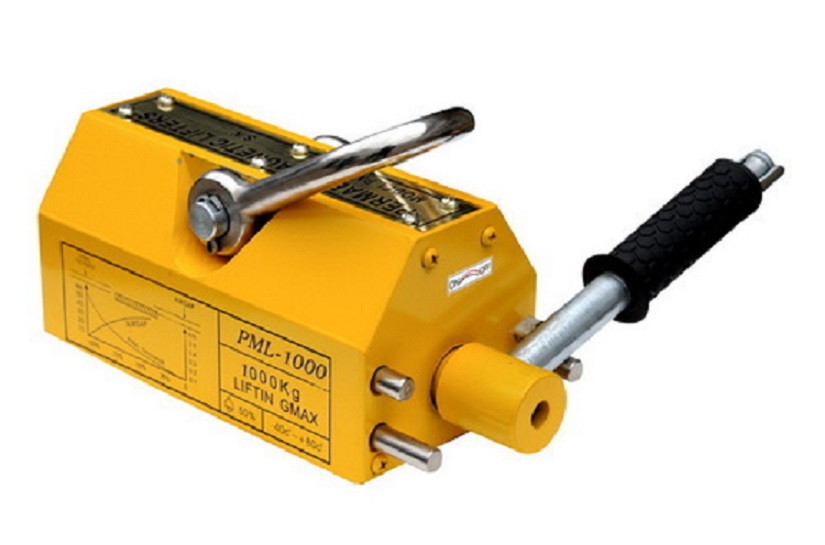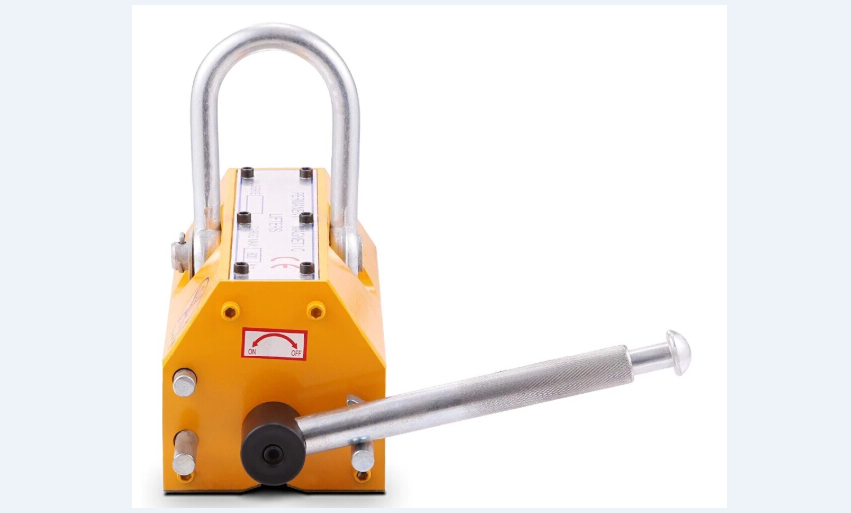How Does Permanent Magnetic Lifter Work?
Permanent Magnetic Lifter has a wide range of applications in the industry and our everyday life thanks to its excellent performance. Then how does a permanent magnetic lifter work? Permanent magnetic lifters have a strong magnetic path produced by the NdFeB magnet which supplies permanent power. On and off of the magnetic path is controlled by turning the manual handle.
 Permanent Magnetic Lifter
Permanent Magnetic Lifter
Permanent Magnetic Lifter Features
The lifters have the features of strong attraction, smaller volume, lighter weight, powerful lifting effort, easy and safe to operate, long-period effort, and without a power supply.
Permanent Magnetic Lifter Uses
The permanent magnetic lifters are mainly used for lifting steel plates and round steel, because of their lightweight, ease of operation, and powerful suction, magnetic lifters are widely applied in ship engineering, warehouse, transportation, and machinery manufacturing.
The permanent magnetic lifter is widely used as a lifting tool in factory terminals and warehouses. In this permanent magnet lifter, there is a magnetic system formed by NdFeB magnetic materials with strong magnetism. It can control the magnetic switch by rotating the handle. It has the characteristics of using no electricity, small volume, lightweight, great holding force, easy and safe operation, and constant magnetic.
A lifting electromagnet is used to load and transfer cast ingots, steel balls, metal, and all kinds of steel scraps, adopting the special design of the magnetic circuit.
 Permanent Magnetic Lifter
Permanent Magnetic Lifter
What is the application of different lifting magnet series?
1. Scrap iron and steel. 2. Blooms, fashioned iron, and square billets. 3. Thick plates, such as slabs. 4. To lift and turnover slabs. 6. Bundled screw-thread steel and rod coils. 7. Roiled strips 8. Bundled screw-thread steel, bundled steel pipe, and double-layer billets.
According to the different requirements of customers, Stanford Magnets have designed and produced multiple series of lifters.
Conclusion
Thank you for reading our article and we hope you've enjoyed it. If it can help you have a better understanding of the Permanent Magnetic Lifter, we would be very happy. If you want to know more about the Permanent Magnetic Lifters, we suggest you visit the Stanford Magnets for more information.
Stanford Magnets has been involved in R&D, manufacturing, and sales of permanent magnets since the 1990s. We provide our customers with high-quality rare earth permanent magnetic products such as neodymium magnets, and other non-rare earth permanent magnets at a very competitive price. And we specialize in manufacturing permanent magnets according to customer's requirements in terms of composition, magnetic characteristics, shapes, and sizes.














